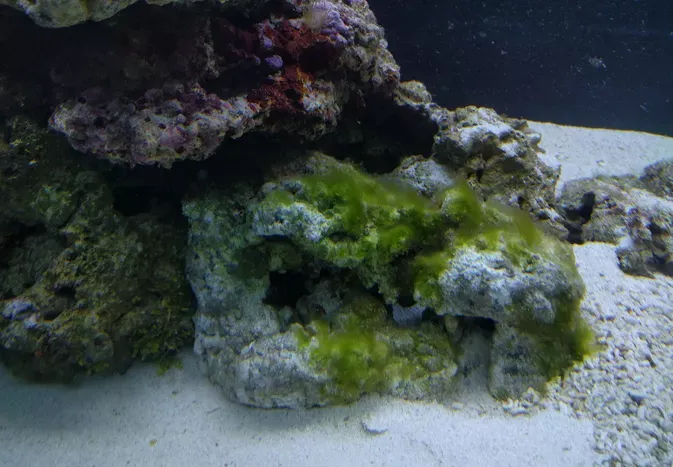Green Hair Algae In Fish Tanks
Updated on 04/26/24

Vanquishing the Verdant Menace: A Comprehensive Guide to Combating Green Hair Algae in Fish Tanks
Introduction
The pristine clarity of a well-maintained fish tank is a sight to behold. However, the unwelcome appearance of green hair algae can shatter this tranquility, casting a veil of unsightly growth over your aquatic ecosystem. This persistent invader not only mars the aesthetic appeal of your tank but can also pose potential health risks to your precious fish.
In this comprehensive guide, we will delve into the depths of green hair algae, unveiling its hidden complexities and empowering you with effective strategies to combat this tenacious adversary. From understanding its causes to employing proven eradication methods, this definitive treatise will equip you with the knowledge and tools necessary to restore balance and harmony to your fish tank.
Unveiling the Nature of Green Hair Algae
Green hair algae, scientifically known as Cladophora, is a type of filamentous algae that thrives in nutrient-rich environments. Its intricate network of thin, long strands gives it the appearance of green hair, hence its common name. This algae is not inherently harmful to fish but can become a nuisance when its growth becomes excessive.
Understanding the Root Causes of Green Hair Algae
To effectively combat green hair algae, it is crucial to identify the underlying factors that contribute to its proliferation. Several common culprits include:
1. Excess Nutrients: High levels of nitrates and phosphates in the water can fuel the rapid growth of green hair algae. These nutrients may originate from overfeeding, decaying plant matter, or inadequate filtration.
2. Inadequate Lighting: Fish tanks that receive excessive or insufficient lighting can create imbalances that favor algae growth. Extended periods of darkness promote algae proliferation, while overly bright lights can stimulate photosynthesis, providing algae with an abundance of energy for growth.
3. Poor Water Flow: Stagnant water creates ideal conditions for algae to thrive. Adequate water flow helps distribute nutrients evenly and prevents the buildup of dead zones where algae can flourish.
4. Lack of Competition: Fast-growing plants can outcompete algae for nutrients and light, effectively keeping algae growth in check. A lack of these beneficial plants can give algae a competitive advantage.
Proven Strategies to Eradicate Green Hair Algae
Now that we have shed light on the causes of green hair algae, let us explore proven methods to eliminate this unsightly invader from your fish tank:
1. Nutrient Control:
a. Reduce Feeding: Overfeeding can lead to an excess of nutrients in the water, fueling algae growth. Adjust feeding schedules to meet the specific needs of your fish population.
b. Clean Regularly: Remove decaying plant matter and feces promptly to minimize nutrient buildup. Perform regular water changes to dilute nutrient levels.
c. Utilize Phosphate Removers: These chemical additives can help absorb excess phosphates from the water, reducing algae's access to this essential nutrient.
2. Optimize Lighting:
a. Avoid Overlighting: Limit lighting duration to 8-12 hours per day. Excessive lighting can overstimulate algae growth.
b. Provide Natural Light: Exposing your tank to indirect sunlight can promote the growth of beneficial algae-eating organisms.
c. Consider UV Sterilization: UV light can kill algae spores present in the water, inhibiting their growth.
3. Enhance Water Flow:
a. Increase Filter Capacity: Upgrade to a more powerful filter or add an additional filter to improve water circulation.
b. Position Filters Strategically: Place filters in areas with high algae growth to maximize their effectiveness.
c. Use Powerheads: These devices can create additional water movement, preventing algae from settling and proliferating.
4. Introduce Algae-Eating Organisms:
a. Siamese Algae Eaters: These fish are voracious algae consumers and can help keep green hair algae under control.
b. Snails: Certain snail species, such as Nerite snails or Mystery snails, can graze on algae, reducing its growth.
c. Shrimp: Some shrimp species, like Amano shrimp, are known for their algae-eating abilities.
5. Employ Algaecides:
a. Use Spot Treatments: Apply specialized algaecides directly to algae patches to kill them off. Follow manufacturer's instructions carefully.
b. Consider Copper-Based Algaecides: Copper is highly effective against algae but can be harmful to fish. Use with caution and remove fish from the tank before treatment.
Additional Tips for Prevention and Maintenance
Beyond the primary eradication methods, here are some additional tips to prevent green hair algae from recurring in your fish tank:
1. Maintain a Healthy Fish Population: Overstocking can lead to nutrient overload and algae blooms. Stick to recommended fish numbers for your tank size.
2. Provide Live Plants: Fast-growing live plants can outcompete algae for nutrients and light. Choose plants that are compatible with your fish species and tank conditions.
3. Clean Regularly: Keep your tank clean by vacuuming the substrate regularly and wiping down tank surfaces to remove algae buildup.
4. Monitor Water Parameters: Regularly test your water for pH, ammonia, nitrite, and nitrate levels. Identifying imbalances early on can help prevent algae outbreaks.
5. Be Patient: Eliminating green hair algae can take time and consistency. Patience and diligence in implementing these strategies will eventually yield a pristine and algae-free tank.
Explore More Pets

Freshwater Aquarium Filters
How to Deal With Cloudy Aquarium Water

Saltwater Aquarium Filters
How Do You Remove Chloramines From Tap Water?

Freshwater Aquariums & Habitat
Can I Keep My Koi Fish Inside?

Saltwater Aquariums & Habitat
14 Best Floating Plants for Your Aquarium

Freshwater Fish Health
How to Treat Ich on Freshwater Fish

Saltwater Fish Health
Fin Rot in Aquarium Fish

Freshwater Aquarium Filters
How to Do Aquarium Water Changes

Saltwater Fish Health
How Do Fish Get Parasites?